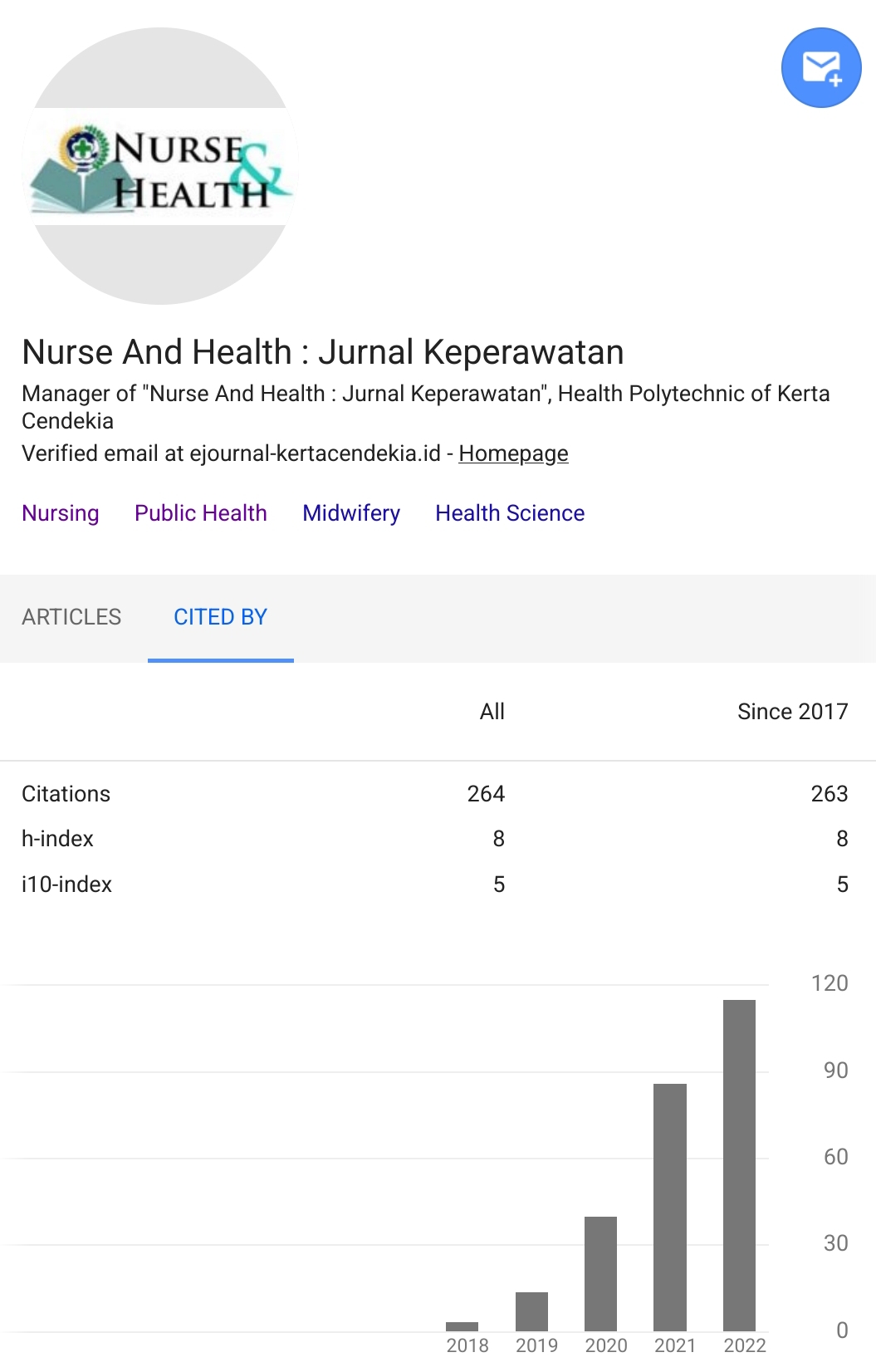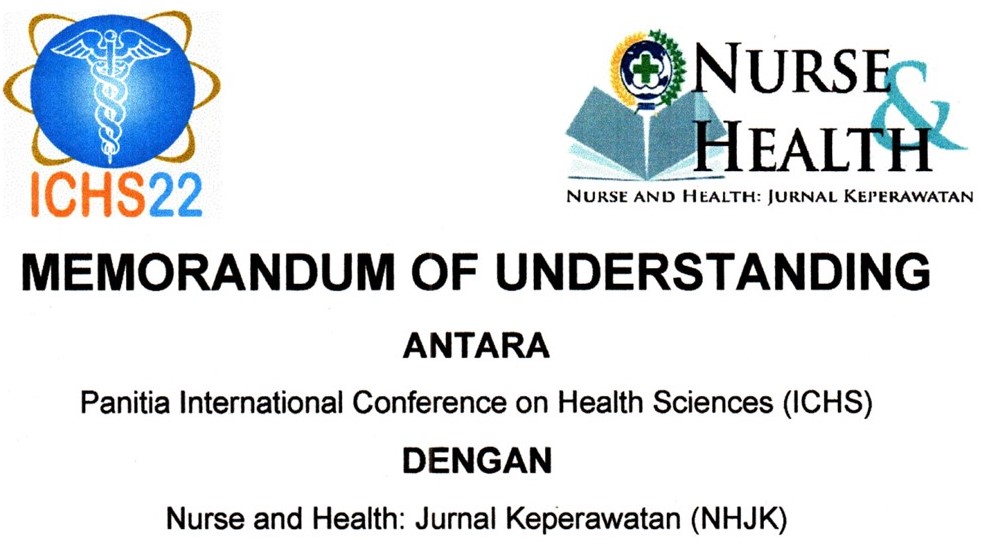THE RELATIONSHIP BETWEEN PERSONALITY AND PSYCHOLOGICAL WELL BEING TOWARD ADOLESCENTS IN DISASTER-PRONE AREAS IN PADANG CITY
Abstract
Abstract Background: Indonesia, particularly Padang City, West Sumatra, is a prone-area toward natural disasters related to geographical, geological and demographic conditions. Natural disasters give a very significant impact on physical, psychological and social. The psychological impact that most often appears in disaster cases is Post Traumatic Stress Disorder (PTSD). One who is prone to experiencing PTSD is adolescents. To prevent PTSD from occurring, good psychological well-being is needed. The factors that influence psychological well-being is personality. Objectives: This study aimed to analyze the relationship of personality with psychological well-being toward adolescents in disaster-prone areas in padang city Methods: This study is an analytical study with a cross sectional approach. This research was conducted in three disaster-prone districts in Padang City, namely North Padang, South Padang, and Koto Tangah. Data were collected through distributing questionnaires to 156 adolescents who were selected by purposive sampling. Data were collected by questionnaire and analyzed descriptively using univariate analysis,and bivariate analysis with chi square test. Results: The results of this study found that 85 respondents (54.5%) had low psychological well-being, and 108 respondents (69.2%) had introverted personality types. The results of the bivariate analysis found a relationship between personality toward psychological well-being with 0.010 P value. Conclusion: The results found that there was a relationship between personality toward psychological well-being adolescents in disaster-prone areas in Padang City. It is recommended for adolescents, parents and teachers to pay attention about the personality and support the students so that adolescents have high psychological well-being. Keywords:Psychological well-being, personality, Adolescent, Disaster-prone area.Downloads
References
The Center for Crisis Management, Ministry of Health, Republic of Indonesia. (2018). Kementrian kesehatan RI. Obtained from http://www.depkes.go.id/penanganan-krisis/ On February 23, 2019.
Amin, M. K. (2016). Post Traumatic Stress Disorders Post-Disaster: Literature Review Post Traumatic Stress Disorders Post-Disaster: Jurnal Kesehatan Al-Irsyad (JKA). 2016: X(1).67-73
Maurya, V. (2019). Natural Disasters, Psychological Well-Being and Resilience: Concerns related to Marginalized Groups: International Journal of Research and Analytical Reviews (IJRAR). 6 (1) 270-275
Wang, X., Shinfuku, N., Gao, L., Shen, Y., Zhang, H., & Zhao, C. (2010). Post-earthquake Quality of Life and Psychological Well-Being: Longitudinal Evaluation in a Rural Community Sample in Northern China. Psychiatry and Clinical Neurosciences, 54(4), 427 – 433. https://doi.org/10.1046/j.1440-1819.2000.007
Hernandez, R., Bassett, S. M., Boughton, S. W., Schuette, S. A., Shiu, E. W., & Moskowitz, J. T. (2018). Psychological Well-Being and Physical Health: Associations, Mechanisms, and Future Directions. Emotion Review, 10(1), 18–29. https://doi.org/10.1177/1754073917697824
Brooks, S. K., Dunn, R., Amlôt, R., Greenberg, N., & James Rubin, G. (2016). Social and Occupational Factors Associated With Psychological Distress and Disorder Among Disaster Responders: A Systematic Review. BMC Psychology, 4(1), 1–13. https://doi.org/10.1186/s40359-016-0120-9
Agency, M., & Gordon, N. S. (2011). Psychosocial Issues for Children and Adolescents in Disasters Theories of Child Development.
Ali, M., & Asrori, M. (2014). Psikologi Remaja: Perkembangan Peserta Didik. Jakarta: PT Bumi Aksara.
Bentzen, J. S. (2013). Origins of Religiousness: The Role of Natural Disasters. SSRN Electronic Journal, (2003), 1–40. https://doi.org/10.2139/ssrn.2221859
Alwisol. (2012). Psikologi Kepribadian. Malang: UMM Press
Lee, E., & Lee, H. (2019). Disaster Awareness and Coping: Impact on Stress, Anxiety, and Depression. Perspectives in Psychiatric Care. 55(2), 311–318. https://doi.org/10.1111/ppc.12351
Kate, et al. (2013). Relationship of Caregiver Burden With Coping Strategies, Social Support, Psychological Morbidity and Quality of Life in The Caregivers of Schizophrenia. Asian Journal Psychiatry. 2013. Oct;6(5): 380-8.
Viejo, Carmen & Gómez-López, Mercedes & Ortega-Ruiz, Rosario. (2018). Adolescents' Psychological Well-Being: A Multidimensional Measure. International Journal of Environmental Research and Public Health. 15. 10.3390/ijerph15102325.
Adyani, L., Suzanna, E., Safuwan, S., & Muryali, M. (2019). Perceived Social Support and Psychological Well-Being among Interstate Students at Malikussaleh University. Indigenous: Jurnal Ilmiah Psikologi. 3 (2). 98-104 doi:https://doi.org/10.23917/indigenous.v3i2.6591.
Donahue, Michael & Benson, Peter. (2010). Religion and the Well‐Being of Adolescents. Journal of Social Issues. 51. 145 - 160. 10.1111/j.1540-4560.1995.tb01328.x.
Ludtke O, Roberts BW, Trautwein U, Nagy G. A random walk down university avenue: Life paths, life events, and personality trait change at the transition to university life. Journal of Personality and Social Psychology. 2011;101(3):620–637. doi 10.1037/a0023743.
Mercedes, G.L., Carmen, V., Rosario, O.R. (2019). Psychological Well-Being during Adolescence: Stability and Association with Romantic Relationships. Frontiers in Psychology. Vol.10 (1). p 1772 -1778
Fauziah, M., Handarini, D. M., Muslihati. (2018). Self-Esteem, Social Support, Personality and Psychological Well Being of Junior High School Student. Jurnal Pendidikan Humaniora. March 2018, Vol. 6 (1) pp. 17–23
Marrero, RJ & Abella, Mónica. (2012). The Contribution of Personality To Psychological Well-Being: An Exploratory Study. Psychology of Satisfaction. 41-65.
Turashvil, T., Turashvili, M. (2015). Structural Equation Model of Psychological Well-Being: A Georgian Exploration. Proceeding - Social and Behavioral Sciences. (2015) Vol. 4 (9).
Kong, F., Zhao, J., & You, X. (2013). Self-Esteem as Mediator and Moderator of The Relationship between Social Support and Subjective Well-Being among Chinese University Students. Social Indicator Research, 112(1), 151-161. doi:10.1007/s11205-012-0044-6.
Authors who publish with Nurse and Health: Jurnal Keperawatan agree to the following terms:
- Authors retain copyright licensed under a Creative Commons Attribution-NonCommercial 4.0 (CC BY-NC 4.0), which allows others to remix, tweak, and build upon the authors' work non-commercially, and although the others' new works must also acknowledge the authors and be non-commercial, they don't have to license their derivative works on the same terms.
- Authors are permitted and encouraged to post their work online (e.g., in institutional repositories or on their website) prior to and during the submission process, as it can lead to productive exchanges, as well as earlier and greater citation of published work (See The Effect of Open Access). Authors can archive pre-print and post-print or publisher's version/PDF.








_resize1.jpg)















